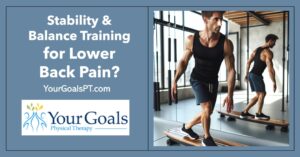Summary: How Walking Helps Health
Walking is an easily accessible and highly effective form of exercise that offers a myriad of health benefits, especially for individuals over the age of 50. This simple activity has gained widespread recognition for its significant positive impact on various facets of physical and mental health. Regular walking can substantially improve cardiovascular health, enhance bone and joint function, bolster mental well-being, aid in weight management, and improve blood sugar control. Furthermore, walking is known to boost the immune system, making it an essential activity for those seeking to maintain their health as they age123.
Studies have consistently demonstrated that walking can significantly reduce the risk of cardiovascular diseases by helping to lower cholesterol levels, manage weight, and decrease blood pressure. Cardiologist Tamanna Singh, MD, notes that even modest amounts of walking each week can lower cardiovascular risks by 15% to 20%, with daily walking reducing the risk of cardiac arrest by 30% to 50%12. Additionally, walking plays a vital role in maintaining bone density and joint flexibility, which is crucial for preventing osteoporosis and managing conditions such as arthritis13.
The mental health benefits of walking are equally compelling. Regular walking has been linked to improved mood, reduced symptoms of depression, and enhanced cognitive function. It also helps mitigate the risks of cognitive decline and dementia, which are significant concerns as people age3. Walking’s role in weight management is well-documented, with research indicating that a short walk can help curb cravings and regulate daily sugar intake, thus aiding in overall caloric reduction and weight control1.
The benefits of walking extend beyond individual health to broader public health initiatives. Public health professionals advocate for the promotion of walking through community-wide campaigns and the development of walkable environments. These efforts aim to make walking a national priority and encourage widespread participation in this beneficial activity45. Overall, the comprehensive advantages of walking make it a cornerstone of healthy aging, particularly for those over 50.
Incorporating daily brisk walks into your routine is a good way to enhance both mental and physical health. Whether it’s a gentle walk in the park or a power walk with friends, establishing a consistent walking routine can lead to many benefits for healthy adults.
Health Benefits of Walking
Walking is a simple, accessible form of exercise that offers numerous health benefits, especially for individuals over the age of 50. The activity is widely recognized for its positive impact on various aspects of physical and mental health.
Walking has become a focal point in health initiatives, as promoting regular brisk walking not only benefits individuals but also supports local community health. By establishing a consistent walking routine, whether through gentle walks in parks or engaging in fitness walking with a walking club, individuals can easily incorporate the physical activity guidelines for Americans into their daily lives for improved health.
Benefits of Walking for Cardiovascular Health
Regular walking has been shown to significantly improve cardiovascular health. Aerobic activities like walking can help reduce cholesterol levels, manage weight, and lower blood pressure, thereby decreasing the risk of heart disease and stroke12. Cardiologist Tamanna Singh, MD, emphasizes that walking helps the heart become more efficient and effective with each beat1. Studies suggest that even small amounts of walking each week can lower cardiovascular risks by 15% to 20%, while daily walking can reduce the risk of cardiac arrest by 30% to 50%2.
Incorporating walking into your routine is a foundational element of good health, offering not just physical benefits, but also enhancing mental well-being. Engaging in activities like the regular family walk or choosing dog-friendly walks can foster a sense of community while also adhering to the exercise guidelines established by the U.S. Department of Health and Human Services.
Benefits of Walking for Bone and Joint Health
Walking is also beneficial for bone and joint health. It helps lubricate and strengthen muscles and increases blood flow to the cartilage, making it a low-impact exercise suitable for individuals with arthritis. Regular walking can keep joints flexible and reduce the risk of osteoporosis13. It has been shown to prevent bone loss and promote bone turnover in premenopausal women6.
Choosing appropriate footwear and engaging in safe walks can enhance the experience for both casual pedestrians and power walkers. As you’re considering your regular walking habits, keep in mind how consistent exercise can support a healthy weight and contribute to overall well-being through a daily brisk walk or longer strolls.
Mental Health and Cognitive Function
Walking has positive effects on mental health and cognitive function. It can help improve mood, reduce symptoms of depression, and enhance overall mental well-being36. Walking also has been associated with a lower risk of cognitive decline and dementia, contributing to better brain health as individuals age3.
Engaging in regular walks can significantly contribute to both physical health and overall wellness, making it a good way to establish healthy habits. By choosing long walks or even a 15-minute walk in supportive shoes — be it for pronated, supinated or neutral feet — individuals can enjoy the additional benefits of proper walking technique while enhancing their fitness stride.
Weight Management
Walking is a beneficial exercise for weight management. It not only helps increase heart rate and metabolism but also curbs cravings for sugary foods, aiding in overall caloric reduction1. According to research, a short walk can regulate daily sugar intake by as much as half, helping individuals maintain a healthier diet1. A 30-minute brisk walk can burn between 107 and 159 calories, depending on body weight6.
Incorporating walking into your routine can provide an effective means of weight management, especially when combined with appropriate footwear and comfortable clothing. Engaging in daily brisk walks not only contributes to a healthy weight but also enhances overall well-being, making it an ideal form of exercise recommended by health care professionals and sports medicine experts.
Blood Sugar Control
Walking after meals can be particularly effective in managing blood sugar levels. Research shows that walking for just two to five minutes post-meal can lower blood sugar levels, contributing to better glycemic control, especially for people with diabetes1. This helps in maintaining consistent blood sugar levels, reducing the likelihood of hyperglycemia and its associated risks7.
Regular walking, especially after meals, provides a safe way to help maintain healthy blood sugar levels. By encouraging daily walks at a moderate walking pace, individuals can easily integrate this beneficial practice into their lifestyles and enhance their overall health with minimal risk.
Immune System Boost
Engaging in regular walking can strengthen the immune system by increasing blood flow, reducing stress, and boosting the body’s antibody levels. This enhanced immune function can help fend off infections, including common colds and the flu16. A single 30-minute walk can temporarily elevate specific immune cells, providing a short-term boost in immune function6.
Regular walking serves as an effective form of exercise, beneficial for individuals aiming to enhance their health and well-being. Incorporating dog walkers into this routine not only adds companionship but also motivates healthy adults to engage in outdoor activities, contributing to overall fitness and health improvement.
Current Scientific Studies: The Evidence on Health Benefits of Walking
Scientific studies have explored the impact of walking and other physical activity (PA) interventions on maintaining health in individuals over 50. Reviews and meta-analyses have shed light on various outcomes related to PA levels, psychological well-being, and participation rates.
Engaging in short walks, such as 10-minute strolls around well-traveled streets, can yield many benefits for those seeking to maintain their health. By following medical advice from their healthcare team and utilizing a walking journal to track progress, individuals can enjoy the positive effects of regular exercise with little health risk.
Meta-Analyses of Physical Activity Interventions
Eight formal meta-analyses focused on comparing the effectiveness of different PA interventions, such as face-to-face walking programs and remote interventions, against control conditions like usual care or no intervention8. These studies investigated not only PA levels but also psychological and functional outcomes. Effectiveness and moderator analyses were presented, providing insights into which interventions are most beneficial for older adults8.
Regular physical activity is vital for maintaining health, and walking programs are a highly recommended intervention for older adults. By choosing activities like leash walking with pets or leisurely strolls in a park, individuals can easily engage in walking, effectively reaping the benefits this form of exercise provides while promoting overall health.
Narrative Reviews and Methodological Assessments
Eleven narrative reviews provided additional context by focusing on PA levels, psychological outcomes, and participation rates. These reviews incorporated both qualitative and quantitative data, offering a comprehensive understanding of the factors influencing PA engagement in older adults8. The methodological quality of these reviews was assessed using the ROBIS tool, which helped in identifying potential biases and ensuring the reliability of the findings8.
This evidence-based approach shows that engaging in regular walking can aid in prevention by maintaining an active lifestyle, which is crucial for the health of both older adults and those seeking to improve their overall fitness. As recommended by the Centers for Disease Control and Prevention, even a simple 10-minute walk can yield significant health benefits, encouraging individuals to choose walks that fit their pace and preferences.
Qualitative Synthesis and Meta-Ethnography
A unique approach was employed to synthesize qualitative literature on physical activity and aging using meta-ethnography. This method re-conceptualized the subject by integrating theories and empirical findings from various studies, providing new insights into the motivations and barriers faced by older adults engaging in PA9. This synthesis highlighted the importance of social contact, enjoyment, and environmental opportunities in promoting sustained PA participation among aging populations89.
The findings emphasize the diverse motivations that encourage older adults to engage in regular physical activity, particularly in social settings. These insights are crucial for health care teams and professionals in the medical school sector as they develop strategies to promote participation in outdoor activities, such as self-guided nature walks or easy-paced group sessions, ultimately enhancing the well-being of our aging population.
Effectiveness of Interventions Promoting Physical Activity and Social Participation
A systematic review focused on the effectiveness of interventions aimed at promoting both physical activity and social participation among community-dwelling older adults. This review included 45 studies conducted in various countries and evaluated the methodological quality of the included studies10. The findings indicated that while many interventions show promise, there is a need for more large-scale longitudinal projects to determine their long-term effectiveness and sustainability810.
Engaging in community-wide walking initiatives can bridge social gaps while promoting exercising among older adults. By encouraging easy-paced 20-minute walks, health club staff can help ensure that pedestrians enjoy the many benefits that walking offers for overall health enhancement.
Methodological Considerations and Recommendations
Heterogeneity in intervention types, comparators, and methodologies often precludes statistical pooling through meta-analysis. Instead, narrative synthesis and sensitivity analyses are employed to elucidate the relationships and findings within the studies7. Recommendations for future research include adapting successful behavior change techniques (BCTs) for aging populations, exploring motivators like social contact and enjoyment, and conducting more longitudinal studies with follow-up beyond two years8. These efforts aim to identify and sustain effective PA interventions for older adults.
Mechanisms of Action
Walking has been shown to improve health in individuals over 50 through various physiological and psychological mechanisms. One of the primary mechanisms is the enhancement of cardiovascular function. Walking strengthens the heart, improving circulation, and reducing both systolic and diastolic blood pressure, which in turn decreases the risk of heart disease and stroke711. This activity helps manage other cardiovascular risk factors such as excess weight, high blood sugar, cholesterol, and chronic stress, thereby promoting overall heart health6.
Moreover, walking plays a significant role in maintaining the venous system, particularly the “second heart” formed by muscles, veins, and valves in the calves and feet. This system aids in pushing blood back to the heart and lungs, and regular walking strengthens this secondary circulatory system, improving leg muscle function and boosting healthy blood flow12. Such improvements can delay the onset of varicose and spider veins and alleviate symptoms in those already affected12.
Walking also has substantial effects on the nervous system. It requires intricate communication between the brain and various muscle groups, making it a complex activity that enhances neuroplasticity—the brain’s ability to reorganize its structure, functions, or connections in response to intrinsic or extrinsic stimuli1314. Regular walking can help mitigate the effects of sarcopenia (muscle loss) and neural atrophy associated with aging, thus maintaining muscle strength and neural efficiency14.
Psychologically, walking has been associated with improved mental health outcomes. It has been found to reduce anxiety and tension, promote positive emotions, and enhance overall mood through mechanisms that include increased cerebral blood flow and the release of endorphins15. These benefits extend to creativity, as evidenced by studies showing that walking can significantly boost creative thinking15.
Social engagement also emerges as a crucial factor in the positive outcomes associated with walking. Participation in physical activity programs that include walking not only improves physical performance but also fosters social interaction and support, contributing to enhanced social well-being and quality of life10.
Therefore, the multifaceted benefits of walking for individuals over 50 are evident in its ability to improve cardiovascular and nervous system function, reduce mental health issues, and foster social engagement, making it an essential activity for healthy aging.
Walking has tremendous potential to positively impact health, particularly for those over the age of 50. Not only does this activity support cardiovascular fitness, but it is also supported by research indicating how walking helps health through various physiological and psychological mechanisms. In addition, engaging in discussions with clinic staff can provide valuable insights on how to incorporate power walkers into group activities for enhanced motivation. As you explore the benefits of this exercise, remember that learning how to achieve a natural stride can greatly enhance your performance and comfort while walking.
Public Health Programs and Community Initiatives to Promote Walking
Public health professionals play a crucial role in promoting and sustaining physical activity, including walking, within communities. They can conduct research and evaluate programs to determine effective strategies for increasing walking and walkability4. These professionals summarize findings on successful community approaches, help other sectors design and implement interventions, and convene partners from multiple sectors to develop strategic action plans4. Additionally, public health efforts focus on collecting data about walking and walkability to measure and monitor changes over time4.
Promoting walking as a local health initiative can significantly improve community health outcomes. By leveraging insights from clinic staff and the latest research on how walking helps health, public health professionals can create effective strategies that encourage residents to take up walking programs.
Goals and Strategies for Promoting Walking
Several goals and strategies have been outlined to make walking a national priority and to design communities that are safe and easy for walking4.
A comprehensive approach to health can include teaching individuals to achieve a natural stride while walking, which can make a significant difference in their overall fitness. This is something we do at Your Goals PT for our local community (Cypress, Texas). As communities embrace walking initiatives, doctors are increasingly recommending the benefits of walking to their patients, highlighting various research findings that support this effective form of exercise.
Role of Community-Wide Campaigns in Promoting Walking
Community-wide campaigns are a comprehensive approach to promoting physical activity. These campaigns often combine media coverage, risk factor screening and education, community events, and policy or environmental changes to encourage walking and other forms of physical activity4. The involvement of various community sectors, including transportation, land use, and community design, is essential to create environments that support walking4.
Effective community-wide campaigns can significantly enhance engagement in physical activity through structured walking initiatives. By incorporating aspects such as community design and transportation improvements, these campaigns can create supportive environments for power walkers and others who want to get outside and enjoy the numerous benefits of walking, as highlighted in recent research on health.
Nonprofit and Volunteer Organizations
Nonprofit organizations play a crucial role in advancing community health by creating initiatives centered around walking and creating walkable communities. By implementing evidence-based walking programs, these organizations can leverage their reach & trusted relationships to share messages about the numerous benefits of walking, supported by extensive research that underscores its positive effects on overall health5. Incorporating walking into daily routines can yield significant health benefits, making it a vital component for a healthy lifestyle. To further enhance the impact of these initiatives, organizations should provide educational resources to encourage safe walking practices and well-equipped walking environments5.
Support from Schools and Higher Education Institutions
Educational institutions, including schools and universities, can also contribute to promoting walking. Schools can implement programs that encourage students and staff to walk, while colleges and universities can design their campuses to support safe and easy walking environments5. Given their myriad of health benefits, integrating walking and walkability into higher education curricula can further promote interdisciplinary training on the benefits of walking and walkable communities5. Moreover, proper footwear is essential to ensure a comfortable walking experience, allowing students to fully enjoy the advantages that walking has to offer.
Recommendations and Guidelines for Health and Walking
Walking Session Duration and Frequency
Some interventions begin with shorter sessions, such as 10-15 minutes, and gradually progress to longer periods of activity, such as 45 or 60 minutes8. The goal is to walk every day, but if that is not feasible, walking at least three to five days a week is recommended16. Regular walking can offer numerous benefits to both body and mind, and incorporating structured walking sessions into your weekly routine can maximize the numerous benefits of walking.
Intervention Duration
Reported interventions in various studies have lasted anywhere from four weeks to three years, with most common durations being between three months and 12 months8. Shorter interventions lasting between four and 12 weeks were slightly less common, whereas those lasting over 12 months were significantly less common. The longest intervention reported lasted for 90 months and was part of an ongoing physical activity program, while the shortest lasted only one day, involving four different text messages sent over the course of the day8.
Engaging in structured walking programs offers numerous benefits that can reveal themselves through research-backed findings. By integrating safe walking techniques and ensuring proper footwear, participants can maximize the positive impacts walking can have on their overall health.
Tailoring Interventions for Effective Walking
Four reviews emphasized the importance of tailoring interventions to participants’ needs, which includes considering environmental mediators, personal readiness, and interests, as well as the types of activities available locally8. Environmental suggestions may include providing tailored information about local opportunities, such as maps of walking or cycling routes, information on upcoming events, neighborhood gyms, and home exercises8. It is particularly important that these environmental mediators match the individual interests of older adults.
As the research shows, designing walking interventions to older adults’ specific interests and needs can significantly enhance their participation and enjoyment of physical activity. Integrating appropriate suggestions, such as providing diverse walking paths and local resources, encourages these individuals to harness the benefits of walking while ensuring that proper footwear is included for comfort and safety.
Remote and Face-to-Face Interventions
Although the focus is on remote approaches to promoting physical activity, many interventions include an element of direct contact. This often involves individual consultation, counseling, or an introductory session at the beginning of the program8. One review described interventions that included a primary face-to-face dose followed by remote follow-up doses, such as motivational phone calls or mailed materials8.
Educational and Counseling Elements in Promoting Walking
Remote interventions frequently include educational elements, which can either be general physical activity information sent to participants or feedback-based tailored information providing individualized reports, leaflets, or exercise plans8. Additionally, a counseling component is often present, aimed at providing further support and motivation.
Intensity and Progression
For aerobic walking or jogging, self-selected intensity or prescribed moderate intensity (11-14 on the RPE scale) is recommended, ideally conducted three times a week for six months with 24-hour intervals between sessions7. The volume is typically set between 5,400 and 7,900 steps per day, with initial sessions starting at 30 minutes and increasing by 5 minutes per week over the first four weeks until reaching 50 minutes per session7.
Walking not only promotes cardiovascular fitness but also offers numerous additional health benefits that extend beyond physical well-being.
Environment Considerations
Choosing appropriate walking environments is essential for maximizing benefits and minimizing risks. Hard surfaces like sidewalks and roads can strain the knees and joints but pose a lower risk of falls17. Softer surfaces like earth, beach, or grass are gentler on the joints but may present trip hazards, requiring caution17. Specialized tracks made from rubber-like materials can provide a softer and safer walking surface17.
Selecting suitable environments for walking significantly contributes to the overall benefits of this activity and reduces risk of injury.
Tools to Track Walking
Tracking steps can help maintain motivation, and simple, cost-effective tools such as smartphone apps can be used for this purpose17. Establishing a structured walking plan, such as walking 5,000 steps on specific days, can also help in maintaining regular activity17.
Incorporating a regular walking routine can significantly improve overall health by promoting consistent activity levels and offering numerous health benefits.
Research and Future Directions
Additional longitudinal research involving larger and more diverse populations is recommended to better understand how different environmental factors interact with individual health outcomes.
Comparative Studies
Research has consistently shown the myriad health benefits of walking, particularly for individuals over 50. Comparative studies highlight how walking can be more advantageous than other forms of exercise in certain contexts, and provide valuable insights for health policy and personal health management.
A significant finding from the studies is that walking, due to its low impact on the body, poses less risk of injury compared to running, making it a suitable activity for older adults. Running, on the other hand, requires more skill and a body type that can handle the physical stress associated with it, such as proper hip and knee alignment and an appropriate body weight18. Individuals who aim to improve their oxygen capacity and CO2 output may find running beneficial, whereas walking is better suited for goals like reducing blood pressure, enhancing mood, and improving sleep quality18.
Additionally, research has demonstrated that moderate to intense walking can significantly reduce the risk of high blood pressure, high cholesterol, and diabetes, provided the energy expended is comparable to running18. This is particularly relevant for older adults, who may find high-intensity activities less feasible.
Another study explored the mental health benefits of walking, emphasizing its role in reducing social isolation and fostering a sense of community. Face-to-face interactions during walking activities have been linked to better mental health outcomes for older adults, similar to the effects seen with physical activity10. These social benefits are crucial as they contribute to the overall well-being of individuals over 50.
A review of 46 papers, encompassing 45 studies, found that walking could lead to important health benefits by reducing social isolation and promoting a sense of belonging10. This review included a diverse participant pool with a significant number of female participants, underscoring the gender-specific advantages of walking. Most of the studies were conducted in high-income countries, suggesting a need for further research in low and middle-income settings to fully understand the global applicability of these findings9.
Finally, practical recommendations from experts underscore the ease of integrating walking into daily routines. Starting with short, manageable goals, such as a 20-minute walk each day, and gradually increasing the duration and intensity can help build a sustainable habit1. The American Heart Association recommends at least 150 minutes of moderate-intensity aerobic activity per week, and walking is an accessible way to meet this guideline, offering substantial benefits for managing risk factors like cholesterol, blood sugar, and blood pressure119.
The benefits of walking are well-supported by research. And be sure to select the proper footwear too for best comfort! Whether it’s a 15-minute stroll or an hour-long promenade, three or seven days a week, a little stepping out goes a long way.
Footnotes
- Benefits of Walking – Cleveland Clinic Health Essentials ↩ ↩2 ↩3 ↩4 ↩5 ↩6 ↩7 ↩8 ↩9 ↩10 ↩11 ↩12 ↩13
- 8 Science-Backed Health Benefits to Walking for Seniors ↩ ↩2 ↩3 ↩4
- The multifaceted benefits of walking for healthy aging: from Blue Zones … ↩ ↩2 ↩3 ↩4 ↩5 ↩6
- 8 Surprising Benefits of Walking Every Day – Verywell Health ↩ ↩2 ↩3 ↩4 ↩5 ↩6 ↩7
- Effectiveness of pedometer-based walking programmes in improving some … ↩2 ↩3 ↩4 ↩5
- Promotion of physical activity interventions for community … – PLOS ↩2 ↩3 ↩4 ↩5 ↩6
- A life fulfilled: positively influencing physical activity in older … ↩2 ↩3 ↩4 ↩5
- Frontiers | Interventions simultaneously promoting social participation … ↩2 ↩3 ↩4 ↩5 ↩6 ↩7 ↩8 ↩9 ↩10 ↩11 ↩12 ↩13 ↩14 ↩15
- Heart disease: 500 extra steps a day may lower risk by 14% ↩2 ↩3
- 15 Health Benefits of Walking, According to Doctors and Trainers ↩2 ↩3 ↩4 ↩5
- How to Increase Neuroplasticity: A 9-Step Guide | SWM ↩
- What your gait says about your health – The Conversation ↩2
- How Walking Enhances Cognitive Performance | Psychology Today ↩
- Executive Summary from Step It Up!: Call to Action | HHS.gov ↩2
- Surgeon General strategies for making communities more walkable ↩2
- 13 Benefits of Walking, Plus Safety Tips and More – Verywell Health ↩
- How To Improve Walking For Older Adults And Benefits — More Life Health … ↩2 ↩3 ↩4 ↩5
- The Truth About Walking Workouts: 9 Myths and Facts – Everyday Health ↩2 ↩3
- Daily Steps Goal if You’re Walking to Improve Brain Health in 2023 … ↩







